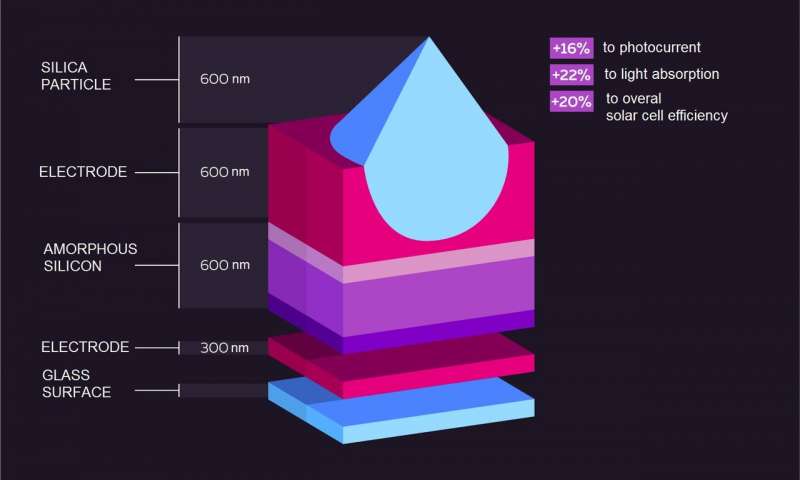Combining the features of an electrode and those of a light-trapping structure, the new solar cell coating developed by ITMO University scientists enhances the overall solar cell efficiency by 20%.
Namely, the coating containing glass microparticles diminishes light reflection from cells and prevents transparent electrode overheating, optimizing the thickness of the active layer, show the results of the research published in scientific journal Optics Letters.
“To create such structures on the surface of a solar cell, we use the method of atomic layer deposition of aluminia zinc oxide. We literally build these electrodes atom by atom,” explains Mikhail Omelyanovich, lead author of the paper. “As a result, overall solar cell efficiency is improved by 20%. What’s more, such an electrode can be used for thin solar cells composed of any material beyond amorphous silicon.”
The researchers underline that the manufacturing of solar cells with such a surface coating does not require complex technology, and the process may be easily adapted for mass production.
“Three years ago, we tried to cover the cell surface with microspheres. Despite improving light absorption significantly, the major drawback was a high reflectance rate. We considered removing the upper part of the microspheres so as to make something similar to a lens that would focus the light on the solar cell. However, while working on practical realization of this idea we found a much better structure. On the whole, the final solution exceeded our expectations based on theoretical calculations,” Omelyanovich said commenting on the breakthrough.
This content is protected by copyright and may not be reused. If you want to cooperate with us and would like to reuse some of our content, please contact: editors@pv-magazine.com.




What do they mean by “overall solar cell efficiency”? Conventionally, solar cell conversion efficiency is measured for orthogonal light, which fails to catch off – axis performance. SFIK there is no agreed metric for this. Maybe the dropoff at 45° would be a decent proxy, as it’s easy to measure.
Sun power celks,are 24% efficient and run the coolest. So what is the total out put of their treated panels ?